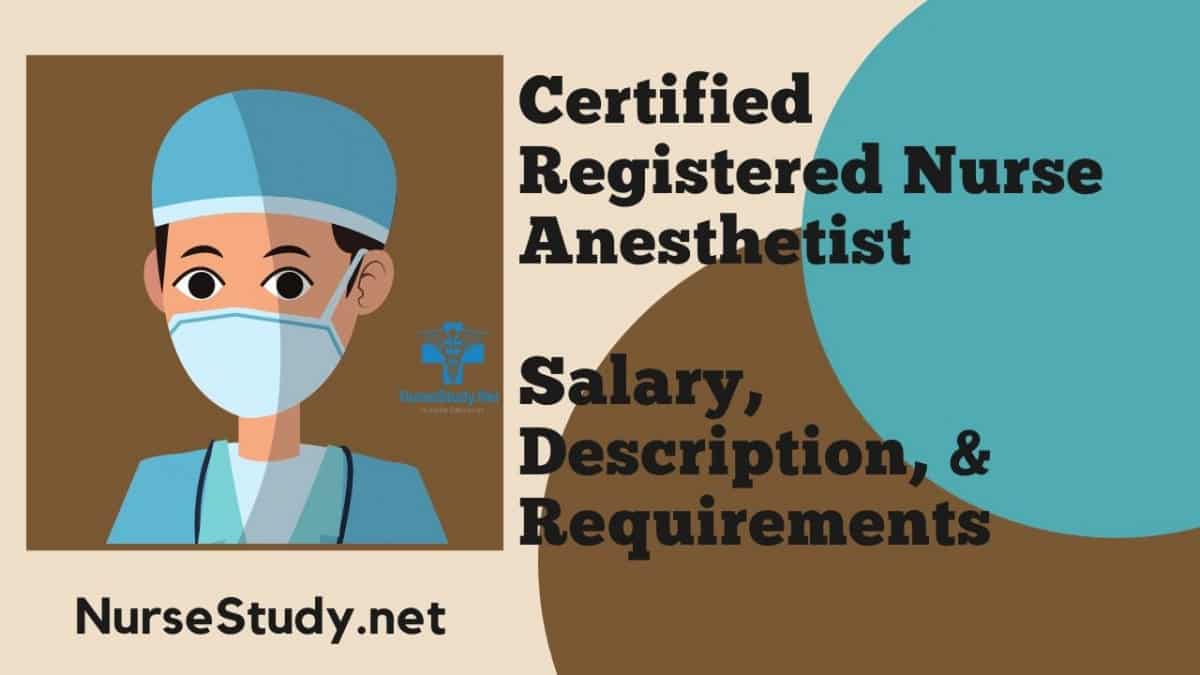This comprehensive guide will help you discover what it takes to become a Certified Registered Nurse Anesthetist (CRNA) and explore the exciting world of nurse anesthesia.
CRNAs play a crucial role in healthcare, providing essential anesthesia services to patients undergoing various medical procedures. These advanced practice registered nurses are highly skilled professionals who work independently or in collaboration with anesthesiologists, surgeons, and other healthcare providers.
For instance, a CRNA might administer anesthesia during a surgical procedure, monitor the patient’s vital signs, adjust anesthesia levels as needed, and provide post-operative pain management.
Becoming a CRNA might be the perfect path if you’re passionate about patient care and interested in a challenging, rewarding career in advanced practice nursing.
What Does a CRNA Do?
Certified Registered Nurse Anesthetists are advanced practice nurses who administer anesthesia and manage pain. They work in various healthcare settings, providing anesthesia care for patients undergoing surgical, obstetrical, and diagnostic procedures.
Key Responsibilities
- Performing patient assessments before anesthesia administration
- Developing and implementing anesthesia care plans
- Administering general, regional, and local anesthesia
- Monitoring patients during procedures and adjusting anesthesia as needed
- Managing pain during and after procedures
- Educating patients and families about anesthesia and recovery
Career Traits
- Strong critical thinking and decision-making skills
- Excellent communication abilities
- Attention to detail
- Ability to work well under pressure
- Commitment to patient safety and quality care
Where Do CRNAs Work?
CRNAs work in various healthcare settings, providing anesthesia care to patients of all ages. As the demand for these specialized nurses grows, career opportunities expand in different environments.
Hospitals
CRNAs work in operating rooms, emergency departments, and intensive care units in hospital settings. They collaborate with surgeons, anesthesiologists, and other healthcare professionals to provide comprehensive anesthesia care for routine and complex procedures.
Ambulatory Surgery Centers
Many CRNAs work in outpatient surgery centers, administering anesthesia for same-day procedures such as colonoscopies, cataract surgeries, and minor orthopedic operations.
Pain Management Clinics
Some CRNAs specialize in chronic pain management, working in dedicated clinics to help patients manage long-term pain conditions through various anesthetic techniques and interventions.
Why Become a CRNA
Becoming a CRNA offers numerous personal and professional benefits. The field combines advanced nursing practice with specialized anesthesia care, providing a challenging and rewarding career path. While the role can be demanding, it offers significant job satisfaction, autonomy, and the opportunity to make a meaningful impact on patient care.
How to Become a CRNA
Becoming a CRNA requires dedication, advanced education, and clinical experience. Here are the steps to pursue this advanced nursing role:
- Earn a Bachelor of Science in Nursing (BSN) from an accredited program.
- Pass the NCLEX-RN exam to become a licensed registered nurse.
- Gain at least one year of full-time experience as an RN in a critical care setting.
- Earn a master’s or doctoral degree from an accredited nurse anesthesia program.
- Pass the National Certification Examination (NCE) administered by the National Board of Certification and Recertification for Nurse Anesthetists (NBCRNA).
It’s important to note that by 2025, all new CRNAs will be required to have a doctoral degree, such as a Doctor of Nursing Practice (DNP) or Doctor of Nurse Anesthesia Practice (DNAP).
CRNA Specializations
While all CRNAs are trained to provide general anesthesia care, some choose to focus on specific areas of practice:
Pediatric Anesthesia
CRNAs specializing in pediatric anesthesia work with infants, children, and adolescents, addressing the unique anesthetic needs of young patients.
Obstetric Anesthesia
These CRNAs focus on providing pain management and anesthesia care for women during labor, delivery, and postpartum periods.
Cardiovascular Anesthesia
CRNAs in this specialty work with patients undergoing heart and vascular surgeries, managing complex anesthesia needs during these procedures.
How Much Do CRNAs Make?
CRNAs are among the highest-paid advanced practice nurses. According to the Bureau of Labor Statistics, the median annual wage for nurse anesthetists was $203,090 as of May 2022. The salary can vary based on location, experience, and work setting.
The job outlook for CRNAs is excellent. The BLS projects a 12% growth in employment from 2021 to 2031, which is much faster than the average for all occupations.
Conclusion
Becoming a Certified Registered Nurse Anesthetist offers a challenging and rewarding career path for nurses seeking to advance their practice. With the growing demand for healthcare services and the increasing complexity of medical procedures, CRNAs play a vital role in ensuring patient safety and comfort during anesthesia care.
If you’re passionate about patient care, enjoy working in high-stakes environments, and are committed to lifelong learning, a career as a CRNA might be the perfect fit for you. Take the first step towards this exciting profession by exploring accredited nursing programs and gaining experience in critical care settings.
References
[1] American Association of Nurse Anesthesiology. (2021). Education of Nurse Anesthetists in the United States. https://www.aana.com/about-us/about-crnas/become-a-crna/
[2] Bureau of Labor Statistics, U.S. Department of Labor. (2023). Occupational Employment and Wages, May 2022: Nurse Anesthetists. https://www.bls.gov/oes/current/oes291151.htm
[3] Bureau of Labor Statistics, U.S. Department of Labor. (2022). Occupational Outlook Handbook, Nurse Anesthetists, Nurse Midwives, and Nurse Practitioners. https://www.bls.gov/ooh/healthcare/nurse-anesthetists-nurse-midwives-and-nurse-practitioners.htm
[4] Nurse Anesthesia Faculty and Student Evaluation of a Simulation-Based Team Training Program. AANA Journal, 87(6), 470-477.
